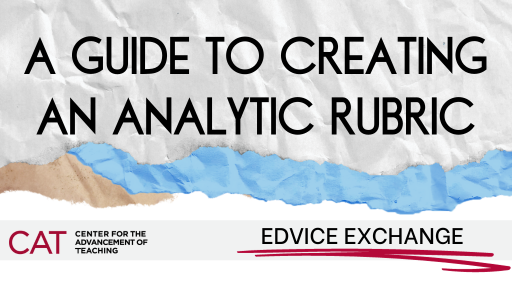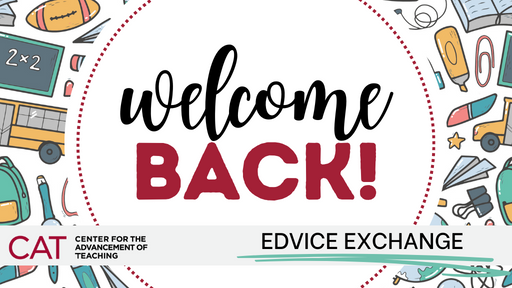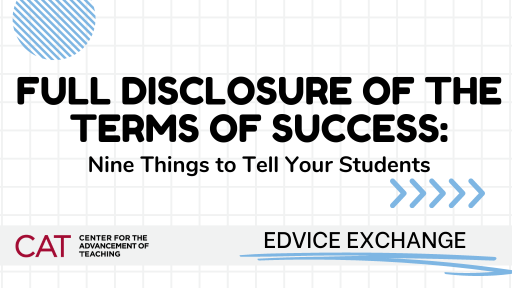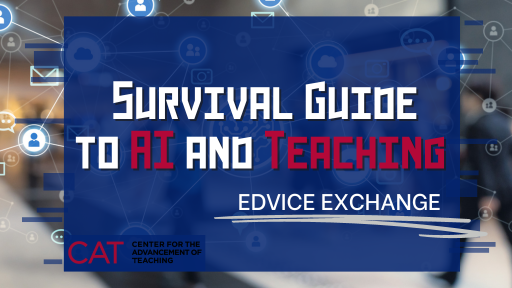Dana Dawson, Ph.D. and Cliff Rouder, Ed.D.
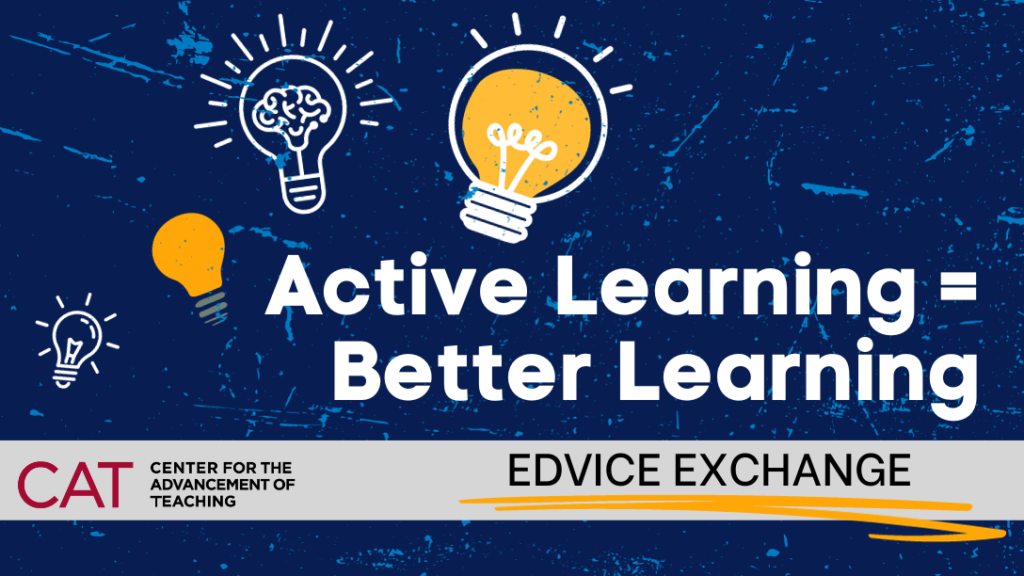
In part 2 of our series on active learning, we identified high-impact, easy-to-implement active learning techniques, and in part 3, we explored peer and collaborative learning. In this part, we’re going to examine high-impact active learning techniques that extend beyond a single class period, possibly spanning an entire semester or even the entire year. These techniques require a bigger planning component and involve a significant shift in roles for the instructor and for students as students assume more responsibility for their own learning. However, they also yield big rewards, including deriving solutions to real-world problems, increased engagement and greater ability to communicate/work effectively in groups. So without further ado, let’s take a look at a variety of long-term active learning techniques.
Experiential Learning
Experiential learning encompasses activities that invite students to learn by doing. Students apply the skills and knowledge they’re learning in their courses within actual civic and work-based contexts that place them in a position to grapple with and reflect on real-world problems. This approach improves student engagement and retention because there are meaningful stakes involved and students can see how what they’re learning will be used in post-graduate situations.
Case-Based Learning
In case-based learning, students are presented with real-world scenarios and asked to apply their knowledge to come up with solutions or to advise on the best way to address the issue at hand. It is a form of guided inquiry where the problem is defined and students use knowledge and skills gained in the classroom to tackle the problem, or in some instances, choose from a set of possible solutions or analyze how others have resolved the scenario.
Project-Based Learning
In project-based learning, students are presented with a complex real-life scenario that has multiple potential solutions. Working in groups, students develop a plan and design and create a ‘hands-on-solution’ in the form of a product or artifact to address the problem.
Problem-Based Learning
Here, students are presented with a case or scenario where they define the problem, explore related issues, and identify a solution. While similar to case-based and project-based learning, problem-based learning is generally less structured and more open ended, and the problem is typically not as well defined as in case-based learning. Problem-based learning focuses on the process of discovery, with students working to define and solve the problem.
Service Learning and Community-Based Learning
Community-based learning (CBL) (also called service learning) integrate direct community engagement into academic courses to mutually benefit students and community partners. These approaches emphasize the development of students’ civic awareness, knowledge, skills, values and goals to produce tangible social change and promote students’ critical thinking, self-efficacy, interpersonal skills, civic and social responsibility, academic development, and educational success.
Process Oriented Guided Inquiry Learning (POGIL)
POGIL is a structured protocol in which students work collaboratively to investigate a topic. This approach begins with the assumption that we learn and complete tasks more effectively in groups because everyone has gaps in their skillset and knowledge base. By pooling assets, students are more able to tackle complex problems, thereby facilitating higher order tasks and ultimately promoting better learning experiences. Key elements of the POGIL approach are the use of persistent teams who together work through challenging, inquiry-based problems and the assigning of roles within those teams that enable students to self-manage the group’s work. Faculty members serve as guides while students learn through the process of inquiry.
Team-based learning (TBL) engages student knowledge through individual testing and collaborative work in persistent teams. There are four essential elements of team-based learning: 1. Groups: Groups must be intentionally formed and managed. 2. Accountability: Students must be accountable for the quality of their individual and group work. 3. Feedback: Students must receive frequent and timely feedback. 4. Assignment design: Group assignments must promote both learning and team development. When these four elements are implemented in a course, the stage is set for student groups to evolve into cohesive learning teams.
The Flipped Classroom
In traditional classrooms, students consume content during class time, generally through listening to lectures. The flipped classroom moves more passive learning activities–such as listening, watching, or reading–outside of class time to make space within the classroom to practice skills and receive feedback. Students gain first exposure to content prior to class, ideally complete a knowledge check before coming to class so they and the professor can assess understanding ahead of the class period, and then participate in in-class or in-clinic activities that prompt higher-level thinking about the content through collaborative learning.
Gamification
We enjoy games because they’re fun, interactive and in many cases, capitalize on our competitive tendencies. There are many ways to bring the energy of play to the classroom by gamifying learning, ranging from easy-to-implement options such as using the “Competition” activity option in Poll Everywhere (for which Temple has an institutional license) to more complex activities such as Reacting to the Past (RTTP), a role-playing and immersive pedagogy. For example, our 2022 STEM Educators’ lecturer, Dr. André Thomas, described his successful creation of a video game designed to educate calculus students on the concept of limits. Where games are devised in such a way that they are enjoyable, involve collaboration, and require students to retrieve and apply course material, they are a surefire mechanism for encouraging engagement and information recall. And where they involve exploring and contextualizing a subject position that the student then must inhabit through an assigned role, as in RTTP, they allow for meaningful reflection on the complexities of contemporary and historical situations.
Executing long-term structured active learning
As mentioned above, long-term active learning techniques can require additional planning and intentional steps for ensuring group success. Faculty often ask us if there are ways to have students work more equitably and effectively in team projects. Asset-mapping can be used to promote equitable teamwork.
Asset Mapping
We know that student group projects can be a valuable experience for students. However, even with an equal distribution of work, they may not always be equitable. This can be especially true in disciplines where underrepresented and marginalized groups might be stereotyped as not being capable enough to handle the project. Consistent with prior research in STEM fields, Stoddard and Pfeifer from Worcester Polytechnic Institute’s required first-year interdisciplinary project-based learning course, women and students of color more frequently experienced their ideas being ignored or shut down, being assigned less important tasks, dealing with an overpowering teammate, and having their work go unacknowledged or claimed by others.
They employed an equity-based approach using asset mapping originally developed by Kretzman and McNight in 1993. In essence, asset mapping gives students the opportunity to get to know their and their team’s strengths, interests, identities, and needed areas of growth related to the project. But it goes well beyond that. Asset mapping is just the initial step of a process that enables students to take a deeper dive into bias and stereotyping as they evaluate their own behaviors and the dynamics of their teams. As a way to operationalize asset mapping, Stoddard and Pfeifer developed this toolkit containing three modules that include the tools, activities, assignments, and rubrics needed at different times of the semester.
If you’re interested in trying one of these longer-term active learning techniques, don’t hesitate to reach out to a CAT staff member for support. Stay tuned for the next installment of our active learning blog series which will focus on active learning in large classes!
___________________________________________________________________________
References
Amaral, G. (November 11, 2019). Using “Reacting to the Past” Role-Playing Games to Foster Vigorous Active Learning. EDvice Exchange Blog. Center for the Advancement of Teaching.
Association for Experiential Education. “What is Experiential Education?”
Bringle, R. G., & Clayton, P. H. (2012). Civic education through service learning: what, how, and why?. In Higher education and civic engagement: Comparative perspectives (pp. 101-124). New York: Palgrave Macmillan US.
Guo, P., Saab, N., Post, L. S., & Admiraal, W. (2020). A review of project-based learning in higher education: Student outcomes and measures. International journal of educational research, 102, https://doi.org/10.1016/j.ijer.2020.101586..
McLean, S. F. (2016). Case-Based Learning and its Application in Medical and Health-Care Fields: A Review of Worldwide Literature. Journal of Medical Education and Curricular Development, 3. https://doi.org/10.4137/JMECD.S20377
Pereira, O. P., & Costa, C. A. (2019). Service Learning: Benefits of Another Learning Pedagogy. Economic Research, 3(9), 17-33.
Pfeifer, G., & Stoddard, E. A. (2018). Diversity, equity, and ınclusion tools for teamwork: asset mapping and team processing handbook.
Poorvu Center for Teaching and Learning. Team-Based Learning.
Rouder, C. (March 21, 2022). A Game-based Approach to Teaching Calculus: Implications of the Research for STEM Courses. EDvice Exchange, Center for the Advancement of Teaching.
Team-Based Learning Collaborative. What is TBL: Overview.
The POGIL Project. General POGIL Book.
The POGIL Project. What is POGIL?
Thomson, B. (September 24, 2019) Flipping the Classroom. EDvice Exchange Blog. Center for the Advancement of Teaching.
Yew, E. H., & Goh, K. (2016). Problem-based learning: An overview of its process and impact on learning. Health professions education, 2(2), 75-79. https://www.sciencedirect.com/science/article/pii/S2452301116300062
